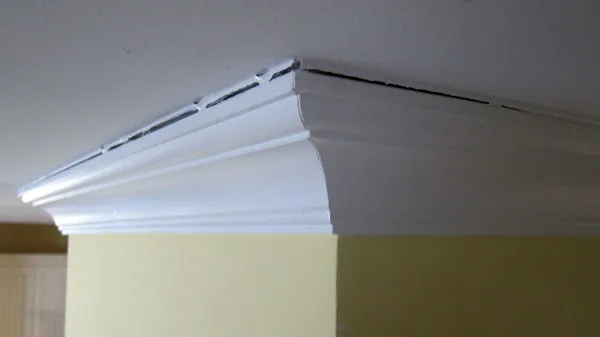The structural integrity of our homes is paramount, and one common issue that often raises concerns among homeowners is the presence of cracks between the ceiling and wall. These fissures, though seemingly innocuous at first glance, may indicate underlying problems that require attention. In this comprehensive guide, we will delve into the causes, implications, and effective solutions for addressing cracks between the ceiling and wall.

Understanding the Causes: Cracks Between Ceiling and Wall
Cracks between the ceiling and wall can manifest for various reasons, and a crucial step in resolving the issue is identifying the root cause. One primary factor is settling, where a house adjusts to its surroundings over time. This natural settling can create stress on the structure, leading to visible cracks. Additionally, temperature fluctuations, humidity levels, and even the type of construction materials used can contribute to the formation of these cracks.
The Implications: Cracks Between Ceiling and Wall
While cracks between the ceiling and wall may seem minor initially, they can have significant implications if left unattended. Water seepage, pests, and compromised structural integrity are just a few of the potential consequences. It is essential to recognize the warning signs and take proactive measures to prevent further damage.
Detecting Cracks: A Homeowner’s Guide
Detecting cracks between the ceiling and wall requires a keen eye and attention to detail. Inspect your home regularly, paying close attention to areas where the ceiling meets the walls. Look for visible cracks, no matter how small, and monitor their progression over time. Additionally, be alert to any changes in the paint or wallpaper, as these can be indicators of underlying issues.
Addressing the Issue: DIY Solutions
For minor cracks, homeowners can undertake simple do-it-yourself (DIY) solutions to address the problem. Start by cleaning the affected area and removing any loose debris. Use a high-quality caulk to fill in the cracks, ensuring a smooth and even application. Sand the area once the caulk has dried to create a seamless finish. While these DIY solutions are effective for small cracks, it’s crucial to know when professional intervention is necessary.
Professional Solutions for Persistent Cracks
Persistent or large cracks may require the expertise of a professional. Consulting with a structural engineer or a qualified contractor can help identify the underlying issues and develop a targeted solution. This may involve more extensive repairs, such as reinforcing the structure, installing support beams, or addressing foundational concerns. While the cost of professional intervention may be higher, it ensures a long-lasting and effective resolution to the problem.
Read too: Understanding the Labor Cost to Texture Ceiling and Enhance Your Home: Unveiling the Secrets
Preventive Measures: Safeguarding Your Home
Taking preventive measures is key to avoiding cracks between the ceiling and wall in the first place. Ensure that your home is properly ventilated to regulate humidity levels, as excessive moisture can contribute to structural issues. Regularly inspect the exterior of your home for signs of settling or shifting, and address any issues promptly. Investing in high-quality construction materials and professional installation can also mitigate the risk of cracks forming.
Conclusion: A Solid Solution for a Solid Home
In conclusion, cracks between the ceiling and wall are not merely cosmetic issues; they can be indicative of underlying structural concerns. Regular inspection, prompt detection, and appropriate action are essential for maintaining the integrity of your home. Whether opting for a DIY solution or seeking professional assistance, addressing cracks promptly is an investment in the longevity and safety of your living space. Remember, a proactive approach to home maintenance can save you time, money, and stress in the long run.